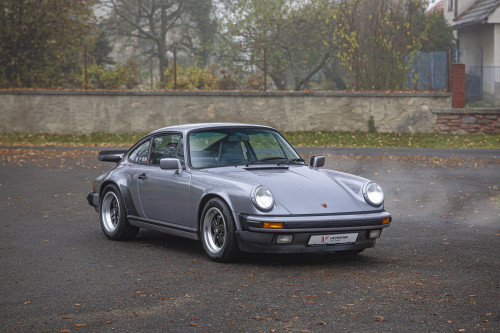A Legendary Motorcycle Resurfaces
Introduction
In the annals of motorcycle history, there are few names as revered and iconic as Excelsior. Founded in 1907, Excelsior quickly gained a reputation for producing high-performance and cutting-edge motorcycles. Among its many legendary creations, the 1930 Excelsior Brooklands stands out as a true testament to the company's dedication to innovation and speed. This description delves into the history, design, and enduring legacy of the 1930 Excelsior Brooklands, a machine that continues to captivate motorcycle enthusiasts even after nearly a century.
The Birth of the Excelsior Brooklands
The 1930 Excelsior Brooklands was conceived during a time when motorcycle racing was at its zenith. The Brooklands circuit in Surrey, England, served as the proving ground for many manufacturers, where they could showcase their bikes' speed and performance. Excelsior, ever the pioneer, aimed to create a motorcycle that could dominate this revered racing track. The result was the Excelsior Brooklands, a machine that would set new standards for speed and power.
Design and Engineering
At the heart of the 1930 Excelsior Brooklands was a petite yet potent 175 cc JAP (J.A. Prestwich) engine. This single-cylinder engine was a masterpiece of engineering, producing an impressive 7.5 horsepower. While this might seem modest by today's standards, it was a significant figure for a bike of this size in the early 1930s. The engine featured advanced overhead valve technology, which was uncommon in motorcycles of its class, allowing it to rev high and deliver remarkable performance.
The lightweight and compact frame of the Brooklands 175 cc JAP complemented its powerful engine. Its racing-inspired design was focused on agility and speed, making it a nimble and responsive machine. The Brooklands 175 cc JAP featured a rigid frame, girder front forks, and minimalistic bodywork – all designed to reduce weight and improve aerodynamics.
One of the most striking features of the Brooklands was its distinctive, all-black appearance. The black enamel finish, combined with chrome accents, gave it a menacing and elegant look that set it apart from its competitors. This design aesthetic was a nod to the Brooklands track itself, where the motorcycles needed to be as visually striking as they were fast.
Racing Success
The Excelsior Brooklands 175 cc JAP quickly proved its mettle on the track. It excelled in short-distance sprint races, where its nimbleness and remarkable power-to-weight ratio shone. The bike's small engine size allowed it to take tight corners with ease and accelerate rapidly out of them.
In 1930, rider G.E. Stephenson famously piloted the Excelsior Brooklands 175 cc JAP to victory at the Junior Lightweight TT race on the Isle of Man, solidifying its reputation as a formidable racing machine. This win was a testament to the bike's exceptional performance and handling capabilities.
Enduring Legacy
While the production of the Excelsior Brooklands 175 cc JAP was limited, its influence on motorcycle racing and design was profound. The bike's success on the track helped shape the future of racing motorcycles, emphasizing the importance of lightweight, agile machines.
Today, the few surviving Excelsior Brooklands 175 cc JAP motorcycles are highly sought after by collectors and vintage motorcycle enthusiasts. Restorations of these pocket-sized racing marvels keep the legacy alive, allowing a new generation of riders to experience the thrill of a bygone era.
Conclusion
The 1930 Excelsior Brooklands 175 cc JAP may have been small in size, but it was giant in terms of racing prowess and engineering innovation. Its compact frame, powerful engine, and remarkable agility ensured its place in the annals of motorcycle history. As we look back on this iconic machine, we are reminded that even the tiniest motorcycles can leave the biggest impact when they are engineered with precision and a passion for speed.
The motorcycle comes from a private collection in Brooklands, where it also experienced its most famous era in the 1930s. The last races for the public, the so-called "demo racings", were held by the owner in 2007 in Brooklands, after which the owner's health did not allow him to ride and the motorcycle was only on display for the last 15 years.
It comes after a perfect restoration, where as many original parts as possible were used.
| Production date | 1930 |
|---|---|
| Body Type | Motorcycle |
| Engine | 175 ccm JAP, OHV |
| transmission | Manual |
| Steering | N/A |
|---|---|
| Layout | Rear Wheel Drive |
| Color - exterior | Black |
| Color - interior | Black |
| Miles/Kilometers shown | N/A |
|---|---|
| Chassis / Engine no. | HOR/W 97445 |
| Location - Country | Czechia |
| Location - City | Brno |
Engine: Type: Single-cylinder, air-cooled Displacement: 175 ccm Manufacturer: J.A. Prestwich Industries (JAP) Valvetrain: Overhead valves (OHV) Performance: Horsepower: Approximately 7.5 horsepower Top Speed: Varies depending on gearing and modifications, but it could achieve speeds in excess of 60 mph (96 km/h). Chassis: Frame Type: Rigid frame construction Front Suspension: Girder fork (specific design may vary) Rear Suspension: Rigid rear suspension Front Brake: Drum brake (specific size may vary) Rear Brake: Drum brake (specific size may vary) Transmission: Type: Manual Number of Gears: Typically 3-speed, but some variants might have had 4-speed transmissions Other Notable Features: Racing-inspired design with minimalistic bodywork. Lightweight construction for agility and speed. Rigid frame for improved handling. Girder front forks for front suspension. High-revving engine with overhead valve technology.

Písek, Czechia

Jablonec nad Nisou, Czechia

Jablonec nad Nisou, Czechia

Písek, CZ

Písek, CZ

Písek, CZ